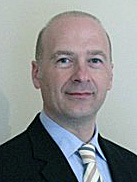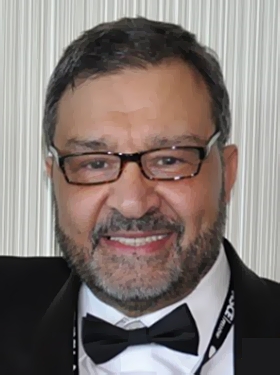To optimize, or not to Optimize, that is the Question for the Construction Industry

As stated by the famous mathematician and astronomer Leonhard Euler: “Nothing happens in the universe not relying on the rules of maximum or minimum.” The use of the mathematical term of optimization can be identified to the era of great mathematicians, physicists and astronomers like Cauchy, Lagrange, Kepler and Newton while minimization was presented a lot prior by Euclid. Notwithstanding these early advancements, engineers discovered the value of optimization not before 1950 when research innovation on optimization algorithms was supported by computing power. Nevertheless, civil engineers remain skeptical in incorporating optimization in their professional practices.
Trial and error vs optimization
The first production-worthy light globe was the outcome of a long and repetitive trial-and-error procedure by Thomas Edison for identifying the optimal material. While Edison had limited knowledge on material properties as electrical resistance and conductance, modern engineers present remarkable technical experience and knowledge that empowers them to deliver high-quality designs based on their expertise. Designs’ weaknesses are detected via testing and are corrected through experience-based make-it-and-break-it procedures.
Advancements in available computing hardware technology and software enabled the development of numerical prototypes of designs, used for performance assessment prior to construction while time and cost efficiency of the trial and error phase was improved. It is worth pointing out that there exist two constraints that restrict further efficiency improvement. The first one is the significant workload demand for interpretation of design cycles of the trial and error approach. The second factor concerns the balance between project complexity and uniqueness versus human intuition. The physical limitations of the human brain in combinatoratorial calculations have been exceeded by the computational abilities of available hardware technology. The inventive solutions of engineers are limited by time and cost but could be assisted in achieving near-optimal design solutions in an algorithmic manner.
The added value created by improved productivity and production of near-optimal solutions establish the need for algorithmic aid in structural design. The added value is generated by reducing design cost and time while increasing responsible material usage, eco-friendliness and construction cost efficiency of projects. Numerical optimization is the means of transportation from a far-optimal design to a near-optimal one with respect to predefined parameters, restrictions and goals.
Optimization in the engineering profession
Since the 1960’s many research studies on applied structural design optimization have been published, where structural design optimization was effective in various problems. However, civil engineers (especially structural engineers) seem susceptible to applying optimization-based design procedures. Nevertheless, mechanical and aerospace engineers have already adopted optimization into their profession practice. For instance, in the automotive industry, BMW has adopted optimization procedures in the development of new diesel engines. While in the aeronautic industry, Airbus used a design optimization approach for developing the wings of the aircraft A380.
First steps of optimization in AECI, what is the benefit
Aiming to identify the benefits of adopting optimization-based structural engineering by the Architectural, Engineering & Construction Industry (AECI), it is important to underline that: (i) The Building Sector (BS) is the higher contributor to global greenhouse gas (GHG) emissions (30% of GHG emissions) while it also consumes almost 40% of global energy, 25% of global water, 40% of global resources, (ii) BS estimated worth is around 10% of the global GDP (USD 7.5 trillion) with more than 120 million people employed, whereas (iii) AECI is expected to expand by 85% to USD 15.5 trillion worldwide in 2030, with U.S., China and India accounting for almost 60% of this growth. With respect to the above issues, the question for AECI is: “To optimize, or not to optimize?”. The answer to this question is straightforward, definitely Yes; if AECI adopts design optimization principles the environmental impact and economic development of AECI is expected to be severe. More specifically, a hypothetical scenario of 10% average material usage reduction is achieved on 5% of the project volume of AECI, the cost reduction translates to USD 15.0 billion for 2016; while the environmental benefit translates to 6.0 million metric tons of CO2 reduction, equal to the annual emission of cities like Pittsburgh, Paris, Milan or Athens.
Worth noticing are the pioneering steps in the field of structural engineering design optimization performed by OptiStructure, a startup recently established in London UK, that aims to institute value engineering revolution in AECI via structural design optimization. OptiStructure optimization services have recently been applied to a 535 meters high-rise reinforced concrete building, to be constructed in the Persian Gulf area. The environmental benefit achieved by the optimized design delivered corresponds to 12.7% and 11.2% reduction on GHG CO2 emissions and energy consumption, respectively; while cost reduction of 8% was achieved that corresponds to USD 6.8 million.
Construction technology leaders are preparing for a massive storm of innovation as the AECI moves to a digital era. As optimization represents a pillar of digitizing construction and BIM technology, we expect that structural engineering will undergo a lot of changes in the near future. OptiStructure since its inception has been present in Singapore, Indonesia, India, United Arab Emirates, Greece, UK, Mexico and the USA looking constantly to expand its reach and impact. If you are interested in partnering with OptiStructure, please do not hesitate to contact me at This email address is being protected from spambots. You need JavaScript enabled to view it. or via our LinkedIn page at https://www.linkedin.com/company/optistructure/, and https://www.linkedin.com/in/nikos-lagaros-086323/ anytime. We are constantly looking for new partners.
About the Author
Prof. Nikos D. Lagaros is the Dean of the School of Civil Engineering at the National Technical University of Athens (NTUA), Greece and advisor at OptiStructure.








